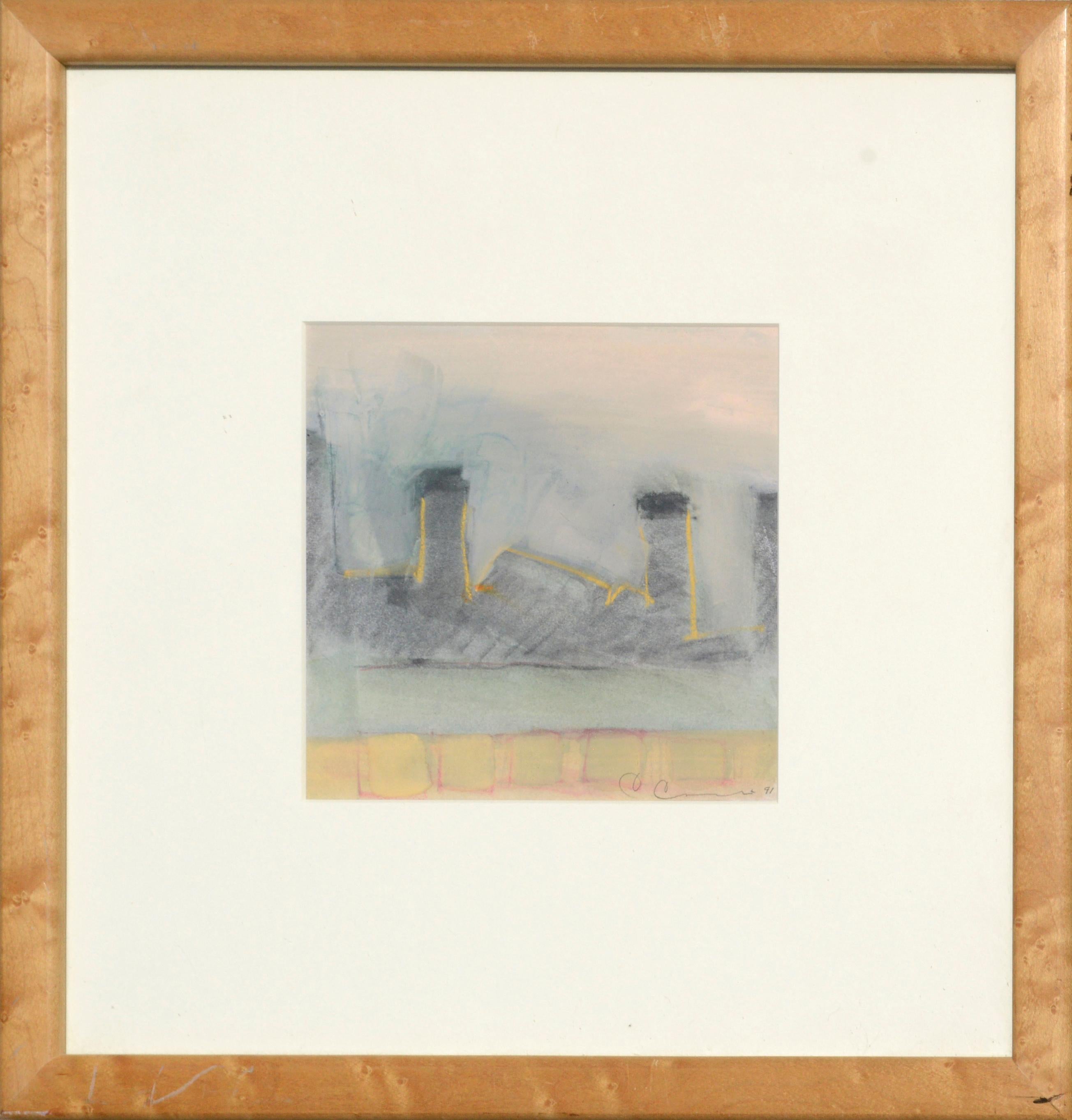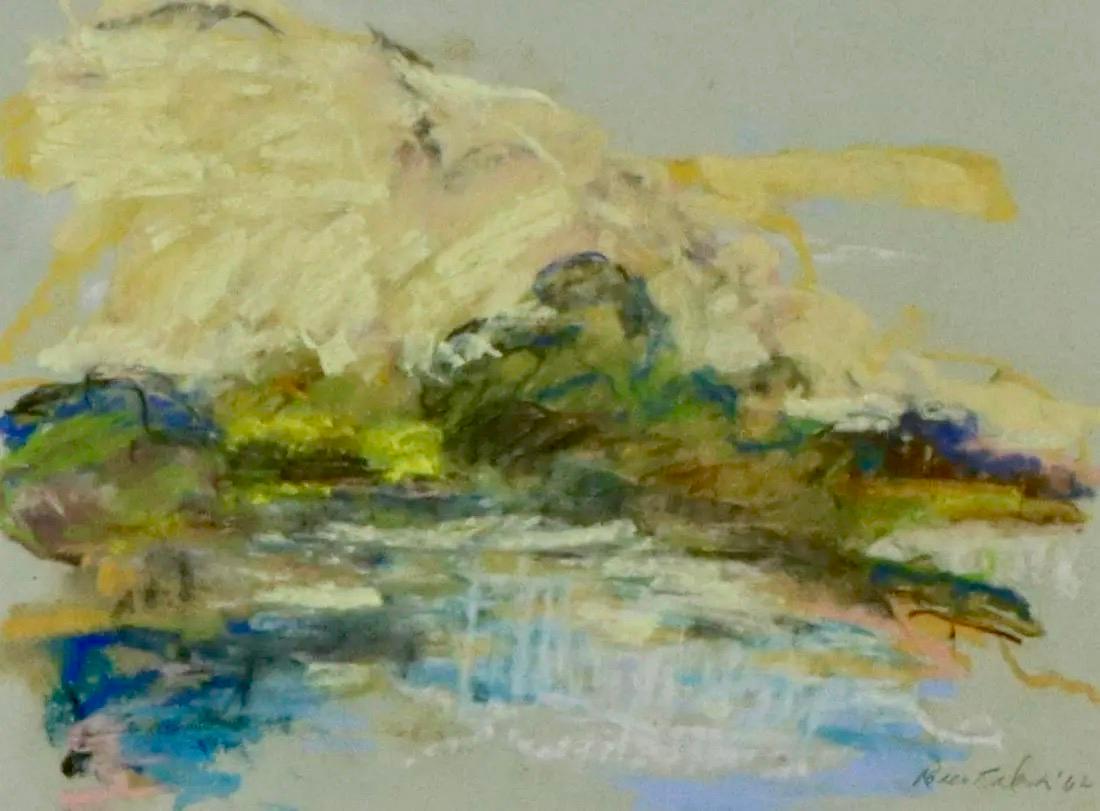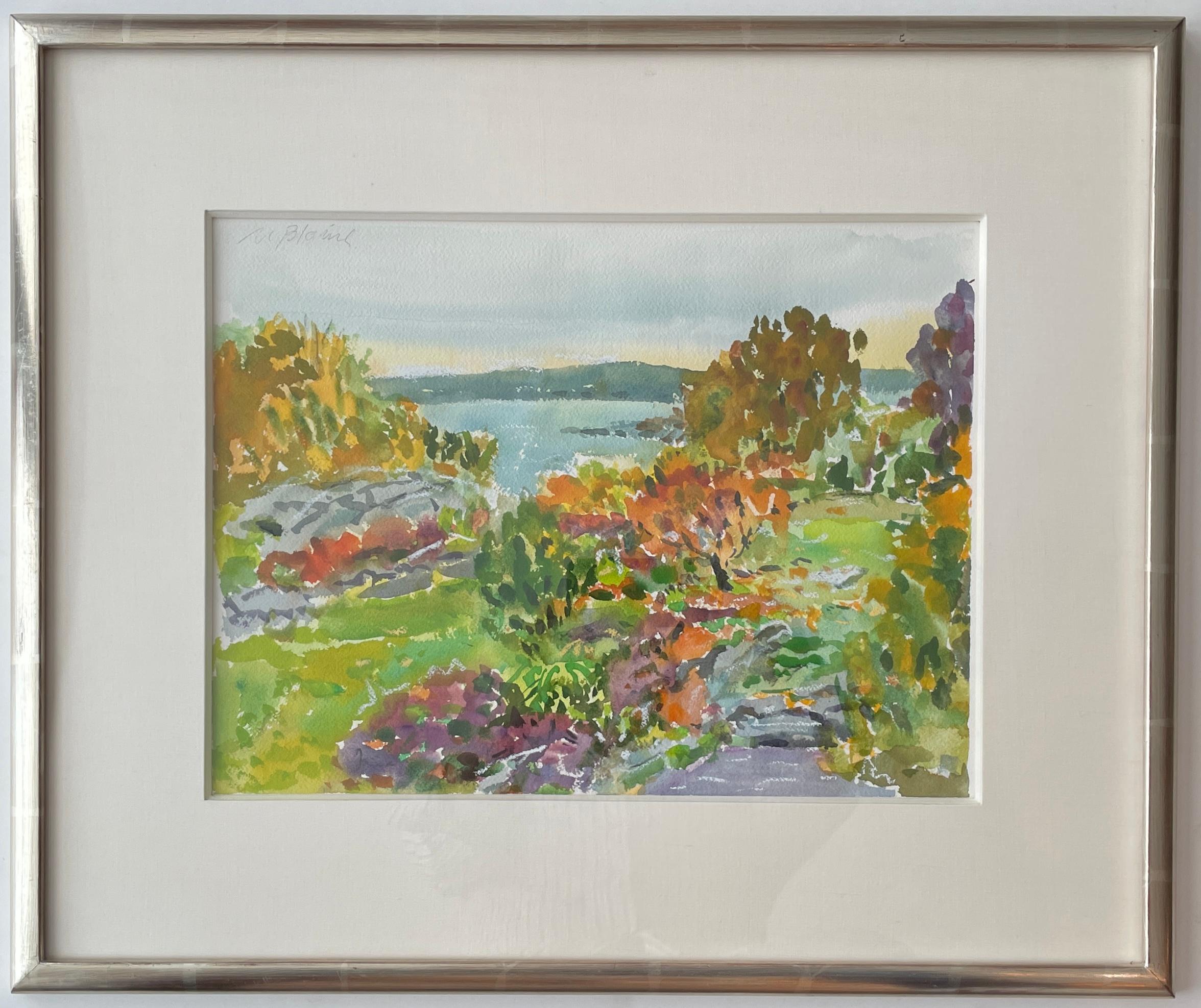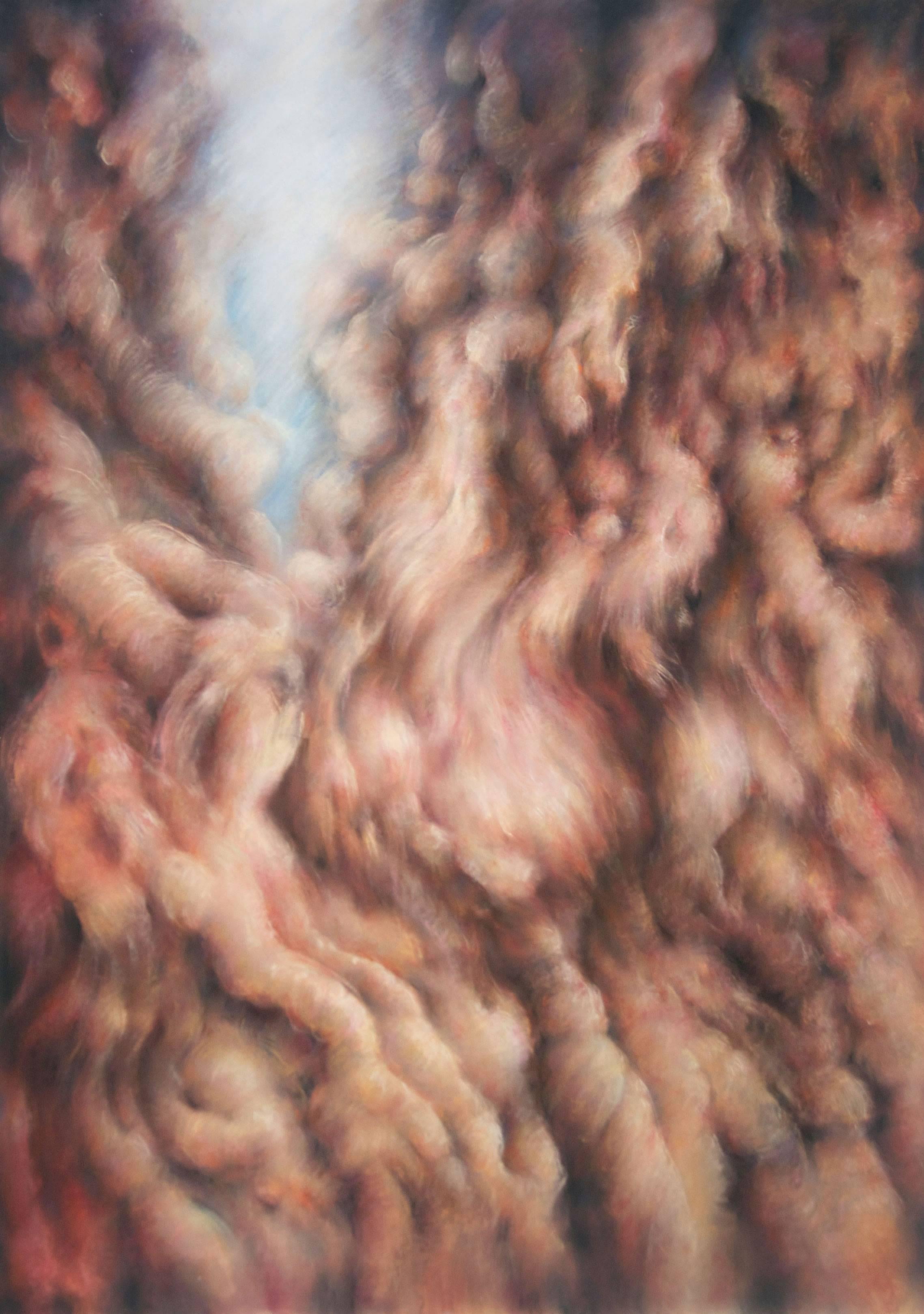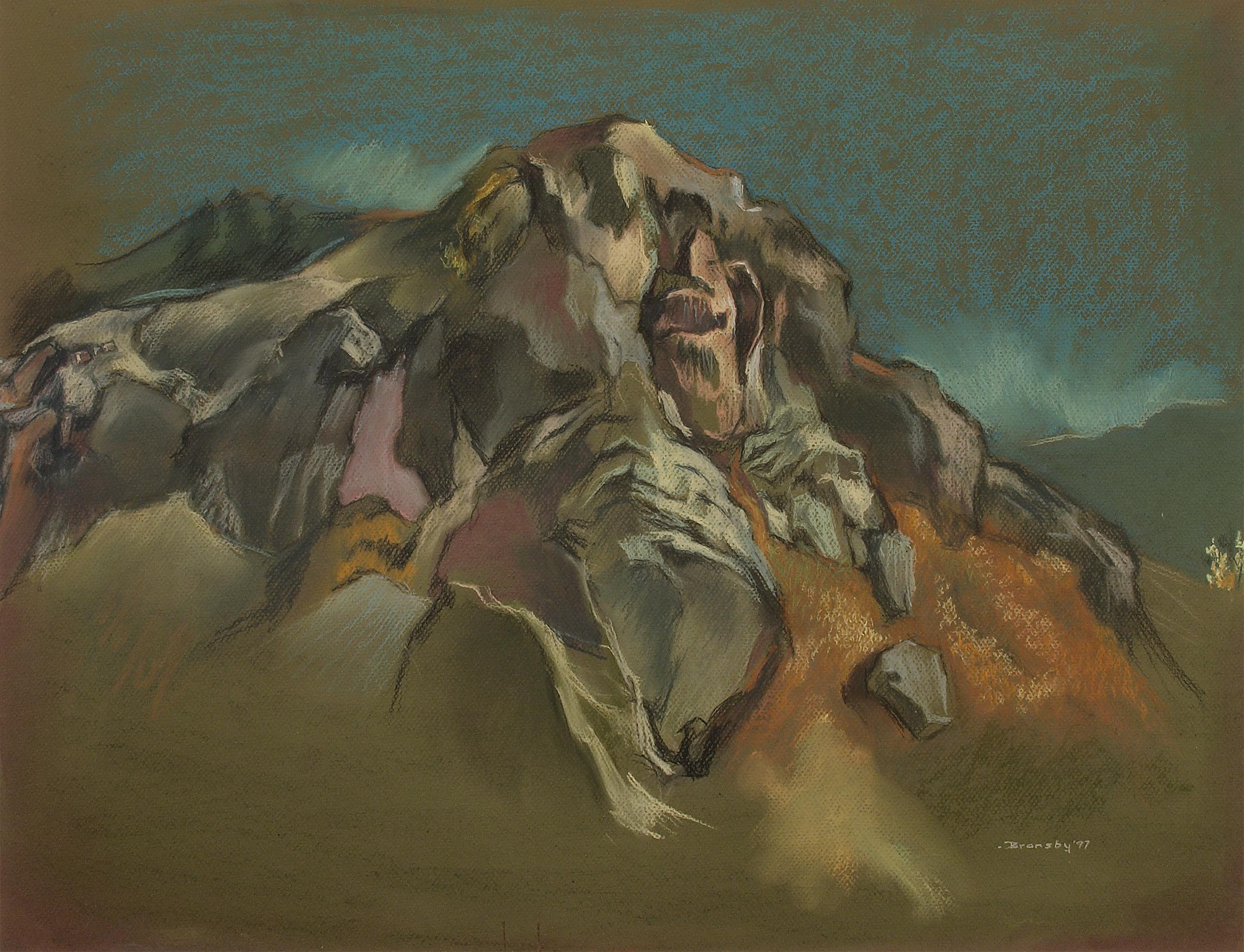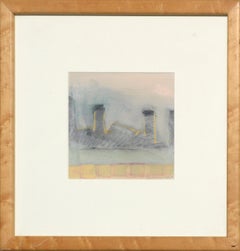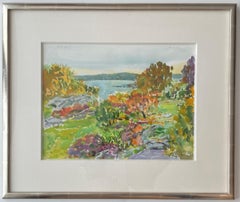Expressionist Landscape Mid-Late 20th Century Pastel
View Similar Items
1 of 5
Seymour TubisExpressionist Landscape Mid-Late 20th Century Pastel
About the Item
- Creator:Seymour Tubis (1919 - 1993, American)
- Dimensions:Height: 20 in (50.8 cm)Width: 26.5 in (67.31 cm)
- Medium:
- Movement & Style:
- Period:
- Condition:Excellent vintage condition.
- Gallery Location:San Francisco, CA
- Reference Number:Seller: 627561stDibs: LU29829872722
You May Also Like
- "Chimneys at Dusk", Small Pastel San Francisco Abstract Urban LandscapeLocated in Soquel, CAAbstracted Bay Area skyline against a pink sunset creates beautiful and soft geometries in this small pastel urban landscape by San Francisco artist Chris Cacciotti (American, 20th C...Category
1990s Abstract Impressionist Landscape Drawings and Watercolors
MaterialsPaper, Pastel, Watercolor
- Abstract Landscape Mid 20th Century Work on Paper Hamptons, NY Drawing PastelBy Robert DashLocated in New York, NYAbstract Landscape Mid 20th Century Work on Paper Hamptons, NY Drawing Pastel. Signed and dated '62 lower right. 9 x 12 inches (sight) and 15. 1/2 x 18 1/2 inches framed. BIO Robert Dash is known for his Hamptons paintings...Category
1960s Abstract Abstract Drawings and Watercolors
MaterialsPaper, Pastel
$3,920 Sale Price20% Off - Touch of Fall watercolor and pastel painting by Nell BlaineBy Nell BlaineLocated in Hudson, NYSigned "Nell Blaine" upper left in pencil. Signed, titled, dated verso on sheet. Signed, titled, dated verso on backing panel. The artist. Exhibited at Fischbach Gallery, NYC, in 1994 (Gallery label verso, and wall label affixed verso). Purchased by private collectors c.1994. By descent. Tibor de Nagy Gallery, NYC (the artist's estate representative), exhibited 2020 (label verso). Exhibited at Fischbach Gallery, NYC, in 1994 (Gallery label verso, and wall label affixed verso). Tibor de Nagy Gallery, NYC (the artist's estate representative), exhibited 2020 (label verso). From her November 15, 1996 NYT obituary: Nell Blaine, a widely respected New York landscape painter and watercolorist, died yesterday at Mount Sinai Hospital. She was 74 and had homes in Manhattan and Gloucester, Mass. Ms. Blaine, who had been hospitalized since July, had been confined to a wheelchair since 1959, when she contracted polio. Ms. Blaine was born in Richmond, Va., in 1922, and first studied at the Richmond School of Art, now part of Virginia Commonwealth University. She moved to New York in 1942 to study painting with Hans Hofmann and later studied etching and engraving at Atelier 17 with Stanley William Hayter. During her first years in New York, her work, which had previously been tightly realist, turned abstract, inspired by Mondrian, Leger and Jean Helion. At one time she was the youngest member of the American Abstract Artists. She was also a founding member of the Jane Street Gallery, one of Manhattan's earliest artists' cooperatives, and had her first solo show there in 1945. Just as Ms. Blaine was becoming known as a promising abstract painter, and gaining the admiration of such critics as Clement Greenberg, she started to shift back to representation. Inspired in part by a trip with Larry Rivers in 1950 to Paris, where she was especially impressed by the work of Vuillard and Bonnard, she immersed herself in the tradition of 19th-century European painting. From the mid-1950's, she cultivated an increasingly painterly and colorful style, usually working directly from nature, or still life, with particular emphasis on the forms and hues of flowers. Her work retained a sense of all-over structure and pulsating energy that she nonetheless credited to abstract art. ''It all goes back to Mondrian,'' she would say. In the 1950's, Ms. Blaine was prominent among a circle of New York artists and poets that included John Ashbery, Frank O'Hara, Kenneth Koch, Mr. Rivers, Jane Freilicher, Leland Bell, Louisa Matthiasdottir, Robert De Niro Sr. and Rudy Burckhardt. She had her first solo show of representational work at the Tibor de Nagy Gallery in 1953 and was represented by the Poindexter Gallery until it closed in 1978, and, in recent years, by the Fischbach Gallery. During the 1950's she supported herself as a commercial artist, designing brochures for art galleries. In 1955, she designed the original logo, column heads and layout for The Village Voice. In 1957, Ms. Blaine was featured in Life magazine as one of five leading young female artists in America. In 1959, after several months of traveling and painting in Greece, she contracted severe bulbar polio on the island of Mykonos. ''To Nell Blaine,'' an exhibition organized at Poindexter to raise money for her hospital bills, included the work of 79 artists, including Saul Steinberg, Robert Motherwell, Elaine and Willem de Kooning, Philip Guston, Mr. Rivers, Ms. Freilicher and Robert Rauschenberg. After eight months in a New York hospital, including five months in an iron lung...Category
1990s Abstract Impressionist Landscape Drawings and Watercolors
MaterialsPaper, Watercolor, Pastel
- Along the AvenueLocated in Storrs, CTRuben Gelardi's depiction of a yellow tram in Copenhagen. Pastel on paper measures 15 7/8 x 20; frame dimensions measure 22 1/4 x 26 3/4 x 1 1/4. Artist'...Category
1950s Abstract Impressionist Landscape Drawings and Watercolors
MaterialsPastel
- Th FallBy Katerina PapazissiLocated in New York, NYKaterina-Papazissi The Fall, 2016 Pasel on paper Her work constructs a universe where the body and nature, as well as inner reality, an inexplicable, overwhelming, material but...Category
2010s Abstract Abstract Drawings and Watercolors
MaterialsPastel, Archival Paper
Price Upon Request - Llangorse Lake, Brecon Beacons, Wales, circa 1964. Welsh Landscape. Abstract.By Roger CecilLocated in Sutton Poyntz, DorsetRoger Cecil. Welsh ( b.1942 - d.2015 ). Llangorse, Brecon Beacons Watercolor and pastel on paper. Signed. Image size 19.5 inches x 29.5 inches ( 49.5cm x 75cm ). Frame size 24.6 inches x 34.6 inches ( 62.5cm x 88cm ). Available for sale; this original painting is by the Welsh artist Roger Cecil and dates from around 1964. The watercolor and pastel work is presented and supplied in a sympathetic contemporary frame (our stock frame, which is shown in these photographs), mounted using conservation materials and behind glass. The original backboard has been reused but the artwork has been isolated from it using conservation barrier materials. This vintage artwork is in good condition, commensurate with its age. Previous cockling (rippling) of the paper has been eliminated by stretching and the use of a new mounting. Previous foxing and age marks have been mechanically removed and the coarse fiber of the paper has been made good in these areas. The painting is now ready to hang and display. The watercolor is signed lower left. Provenance: Previously with the Howard Roberts Gallery, Imperial Buildings, 69/74 St Mary Street, Cardiff. Roger Cecil was a reclusive painter, draughtsman and teacher who was born in Abertillery, Monmouthshire in 1942. He lived and worked in Wales for the last four decades of his life, much of it in the house where he was born and brought up. Cecil produced abstract work rich in imagery, poetry and color, which were drawn from his environment, the industrial valley towns and mountains. Prolific and obsessive, he was always a solitary artist, with no affiliations to any group or artistic movement. He worked for more than forty years, with an ever evolving and prolific creative output. His pictures capture the geology and the history of the places he knew so intimately, and the impact of man of that environment. Cecil studied Fine Art at Newport College of Art from 1959 to 1963, where his teachers included John Wright and Thomas Rathmell; in 1963 he gained the College’s highest award in the national diploma in design and a place at the Royal College London. In 1964 he won the David Murray Landscape Award from the RA. He took up his place at the Royal College of Art, but after just a few weeks he was unsatisfied and instead took up manual work in opencast mines and building sites. Cecil later spent some time teaching at Ebbw Vale. From 1995 to 1998 he did his MA, which he gained with distinction in communication design at St. Martin’s College of Art. The BBC made a television documentary on Cecil's work called The Gentle Rebel. For a long time Cecil did not exhibit, through choice, and it was friends who helped to promote him. He then had a series of exhibitions at Business Art Galleries from 1987, and in 1995 the Hill Court Gallery, Abergavenny, held a retrospective of his work. In 1998 Gordon Hepworth and Y Tabernacl both showed Cecil's pictures. Cecil’s works were also shown at the Oriel Myrddin Gallery in 2006 and 20011. The small book which takes the name of the earlier exhibition ”Cariad”; has an introduction by gallery manager Meg Anthony which states; “The magic of Roger Cecil’s work is in part down to the man, for he is enigmatic and surprising, diffident and proud. He has deliberately avoided the art establishment, remaining shy of its protocol and systems of exposure and recognition. He has consciously created the space to pursue his art, away from the pressures of publicity and celebrity...... paint is Roger’s passion.” Cecil’s methods were complex; he worked with a mixture of materials, including oil pastels, sandpaper, primer and plaster. He built up layers and then he rubbed and scratched them away. His work is textured and nuanced, and the color reverberates as if it has a life of its own. The paintings are abstract, but there are echoes of monumental shapes and undulations of the female form, the Valleys - the dark hills embracing the bowls of space and the rich, gritty textures of the industrial and post-industrial landscape, highlighted by intricate, personal marks. Sarah Bradford states: “Scale is an important feature of Roger Cecil’s work; he constantly shifts from near and the far off. He also moves his viewpoint from looking at, to looking down on to. This looking down, as though a bird, onto the world of the painting, comes from exploration of his surroundings and from the ordinance survey maps he takes with him when he walks. He has often said how he is inspired by the language of symbols and lines that are used in maps to delineate the landscape. It is easy to see the connection when looking at the networks of invented footpaths, waterways, and other pinpoint features that can be found in his work.” … Mary Lloyd...Category
Mid-20th Century Abstract Expressionist Landscape Drawings and Watercolors
MaterialsPaper, Pastel, Watercolor
$3,581 Sale Price20% Off
Recently Viewed
View AllMore Ways To Browse
Late 20th Century
Santa Fe Artist
Mid Century Pastels
Mid Century Expressionist Art
Santa Fe Landscape
Mid Century Santa
Mid Century Pastel Art
Vintage Abstract Landscape Landscape
Santa Vintage
Vintage Santa
Vintage Pastel Art
Mid Century Abstract Pastel
Indian Painting Midcentury
Fe Vintage
Vintage Santa Fe
Vintage Expressionist Landscape Painting
Vintage Pastel Landscape
Indian Paintings Vintage
